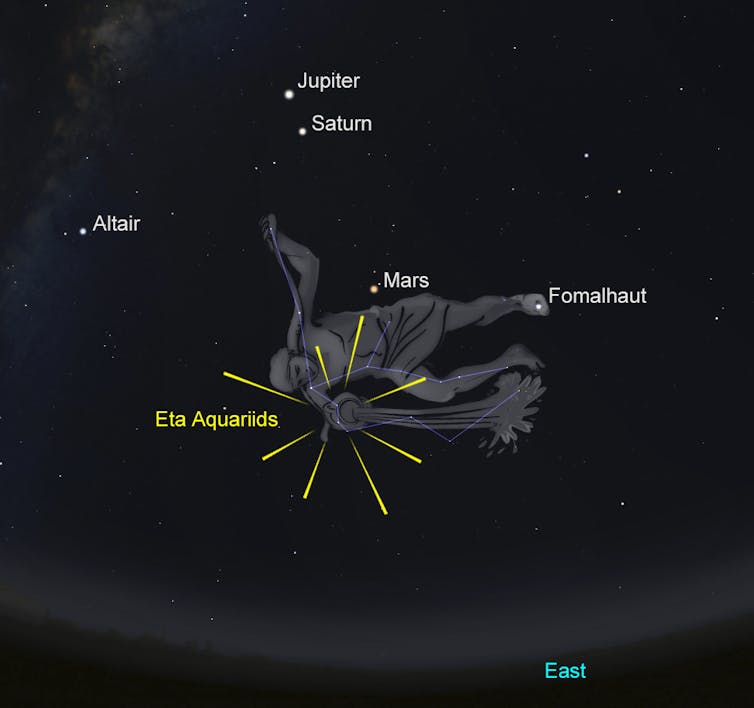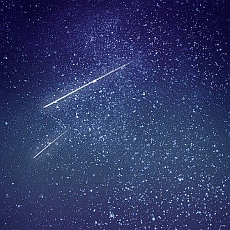The Eta Aquarid meteors, which are bits of debris left by the passing of Halley’s Comet, are about to begin streaking through the night sky. Good news is, it’s best viewed in the Southern Hemisphere. Known as Earthgrazers, such meteors enter the atmosphere at a very shallow angle, with the result that they can streak all the way across the sky, from horizon to horizon.
Astrophysicist Professor Jonti Horner said the peak of the shower was expected just before dawn on Tuesday (May 5) but that will be close to Full Moon so best viewing likely this weekend between moonset and dawn.
Eta Aquariids [S]
Active: April 19 – May 28
Maximum: May 5, 9pm UTC = May 6, 7am AEST (Qld/NSW/ACT/Vic/Tas) = May 6, 4am AWST (WA) = May 6, 6am JST
ZHR: 50+
Parent:Â Comet 1P/Halley
While not counted as one of the big three, in many ways the Eta Aquariids stand clear of the pack as the best of the rest.
Only really visible to observers in the tropics and the southern hemisphere, the Eta Aquariids are fragments of the most famous of comets –- Halley’s comet. They mark the first (and best) of two passages made by the Earth through the debris laid down by that comet over thousands of years –- with the other being the Orionids, in October.

The radiant only rises a few hours before dawn, even at southern altitudes, and the further north you go, the closer to sunrise the radiant appears. This is what prevents northern hemisphere observers from taking advantage of the Eta Aquariids –- the Sun has risen by the time the radiant is high enough for the shower to put on a decent show.
The meteors are fast and often bright, and the brighter ones have a reputation for leaving behind noticeable smoky trains. The maximum of the shower is broad, with rates remaining above ~30 meteors per hour for the week around the date of the maximum.
It is well worth getting out to observe the Eta Aquariids at around the time their radiant rises. This gives the maximum amount of time to observe the shower before dawn, but in addition, those few meteors you observe when the radiant is sitting just above the horizon can be spectacular.
Known as Earthgrazers, such meteors enter the atmosphere at a very shallow angle, with the result that they can streak all the way across the sky, from horizon to horizon.
The Eta Aquariids reach their peak in 2020 a couple of days before the full Moon. That the radiant does not rise until a few hours before sunrise works to our advantage this year –- the shower’s radiant will rise at around the same time the Moon sets, so the shower can be observed in Moon-free skies, despite the proximity of the Full Moon.
(From Professor’s Horner’s meteor shower guide for 2020Â – Read the full article on The Conversation)



